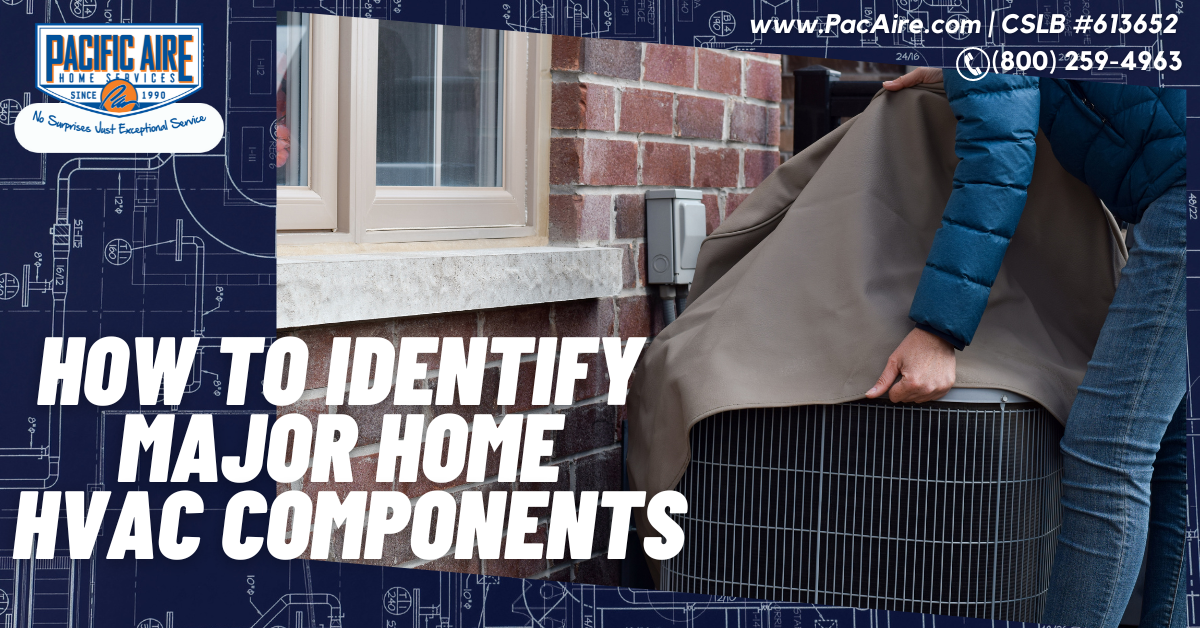Understanding the inner workings of your home’s heating, ventilation, and air conditioning (HVAC) system can seem like a complex task. These systems are, after all, the unsung heroes responsible for our year-round comfort. While there are countless makes and models of HVAC units, most of them share common core components. To help you navigate this, we’re going to look into the key parts of a standard home HVAC system, exploring what they do and why they’re essential.
1. Air Handler
Regarded as the ‘heart’ of your HVAC system, the air handler is usually housed indoors. Its primary function is to circulate cooled or heated air throughout your home via the system’s ductwork.
The air handler comprises multiple smaller parts, including the blower (or fan), heating and cooling elements, and filters. These components work together in harmony to control and improve your indoor air quality and temperature.
The air handling unit takes in air from the environment, conditions it by either heating or cooling, and then pumps it out to various sections of your house. Regularly inspecting and cleaning your air handler can help prevent significant issues like water leaks or system failure due to accumulated dust and debris.
2. Compressor
Nestled within the outdoor unit of your HVAC system, the compressor is what some would describe as the ‘workhorse’ of an air conditioning system. This essential part is primarily responsible for moving refrigerant throughout the system.
The compressor works by increasing the pressure and temperature of the refrigerant gas. This process is vital because it prepares the refrigerant for the condensation process, where it releases the heat it’s absorbed from inside your home.
Without the compressor’s continuous operation, the refrigeration cycle would not be possible, and your house wouldn’t cool down, especially during those hot summer months. If your compressor is damaged or malfunctioning, it could significantly impact your HVAC system’s cooling capabilities.
3. Condenser Coil
Situated in the outdoor unit, the condenser coil is crucial for the heat exchange process. It either releases or collects heat, depending on the time of the year and your system settings.
In a cooling cycle, the condenser coil dissipates the heat carried by the refrigerant into the outside air. If you’re using a heat pump, during a heating cycle, the roles are reversed, and the condenser coil collects heat from the environment.
Keeping the condenser coil clean and free of obstructions like leaves or other debris is essential. These elements could hinder the heat exchange process, leading to decreased efficiency and potential system damage.
4. Evaporator Coil
The evaporator coil is generally found inside the air handler. It’s filled with refrigerant that absorbs heat, thus cooling down the air that blows over it.
When the warm air from your home passes over this chilled, evaporating coil, the refrigerant inside it absorbs the heat, leaving cooler air to be pushed back into your home. The heat absorbed by the refrigerant is then transported outside by the compressor, and the cycle begins anew.
Similar to the condenser coil, the evaporator coil should be kept clean to maintain its efficiency and avoid issues like ice build-up or reduced cooling capacity.
5. Heat Pump
A heat pump might be part of your HVAC system if you live in a climate with milder winters. This versatile component can both heat and cool your home by changing the direction of refrigerant flow.
During winter, the heat pump draws heat from the outdoor air (or ground, in geothermal systems) and moves it inside to warm your home. Conversely, in summer, the heat pump operates similarly to an air conditioner, extracting heat from inside your home and releasing it outdoors.
Despite the name, a heat pump is an energy-efficient cooling solution for those hot summer days and a reliable source of warmth during the colder months. Its dual role makes it a cost-effective choice for maintaining a comfortable indoor temperature.
Understanding your HVAC system components can not only provide insights into how your system works but also equip you with knowledge that could save you time and money. It can help you perform simple maintenance tasks, understand when professional service might be necessary, and ensure you’re making the best decisions regarding your home comfort system. A well-maintained system means a longer lifespan for your HVAC, improved energy efficiency, and, most importantly, a comfortable home environment for you and your family.
Visit our website at https://bit.ly/pacificaire_attic_insulation or give us a call at 805-737-2564


